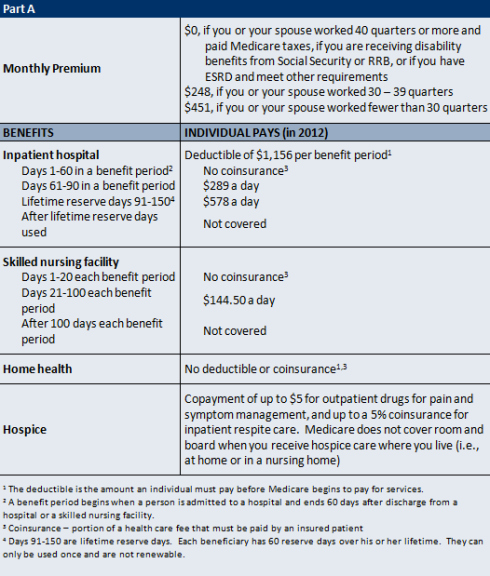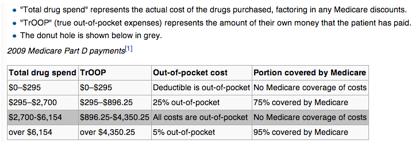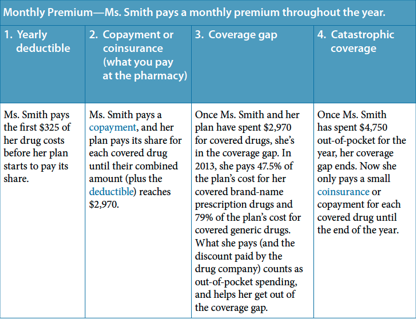Medicare is health insurance for people who are 65 and older. There are exceptions to this such as people under 65 who have certain disabilities and people any age with End-Stage Renal Disease (This is permanent kidney failure requiring dialysis of a kidney transplant).
Medicare is comprised of four parts:
Part A of Medicare covers inpatient hospital care.
Part B is known as the Supplementary Medical Insurance (SMI) program and covers physician services, outpatient hospital care, some lab tests, wheelchairs, preventive care (prostate exams and mammograms), and more. Also, if a drug has an indication for services that are used in a hospital setting (such as IV drugs), part B covers these. An example of a drug like this is Humira because it must be given through infusion.
Part C allows people to enroll in Medicare Advantage, which is a private plan. This combines Part A, Part B, and usually Part D. Medicare approved companies provide this program.
Part D is prescription drug coverage that was created in 2006. This was created to address the increasing number of oral prescription medications. Part D does not cover all Medicare drug costs and this causes a coverage gap known as the “donut hole.” Before 2010, patients had to pay 100% of the cost of all drugs in the “donut hole.” This hole occurs due to Medicare covering 75% of up to $2,700 of prescription costs and not covering anything between $2,700 and $6,154. Then after 6,154 in costs per year catastrophic coverage kicks in and Medicare covers 95% of costs. These drugs are not priced as high for potential disease organization aid, yet the government is not helping these patients’ costs as substantially as they should.
The difference between $6,154 and $2,700 is $3,454. Patients receive a 75% discount with the help of Medicare but is responsibility for the $896.25 PLUS the entire $3,454 with no help from Medicare in this gap. After $6,154 in costs, the patient then only becomes responsible for an additional 5% of costs. Therefore, drugs over $6,154 are $430.25 + 5% of difference between $6,154 and the cost of the drug.
http://en.wikipedia.org/wiki/Medicare_Part_D_coverage_gap
*This is from 2009
For example, a patient’s drug costs $3,600 annually. Starting in January 2008, the payment for the patient’s monthly prescription would increase 300% from $75 to $300 in October of that year. This scenario in 2013, for brand drugs, would have the patient’s payment increase from $75 to $142.5 which is still almost a 100% price increase.
In 2010, those patients who bought drugs in the “donut hole” received a $250 rebate due to legislation change in the Patient Protection and Affordable Care Act. By 2020, the cost of drugs priced in the coverage gap will not be more than 25% of its price. This was 2012’s Part D payment plan:
Also Part D 2013 which has some slight changes from 2012:
In recent years, the government has passed legislature assuaging over 50% the financial burden in the coverage gap despite the pressures to reduce overall healthcare spending in the budget. My guess is that this has helped increased compliance of patients when this coverage hits the “donut hole.”





1 comment
Comments feed for this article
February 28, 2013 at 8:41 AM
What Is An Accountable Care Organization In Healthcare? ( #ACO ) | Translating Healthcare
[…] to form linkages and facilitate coordination of care delivery.” The federal government (Medicare) is the primary payer for an ACO but there are also private insurance plans as well. They create […]